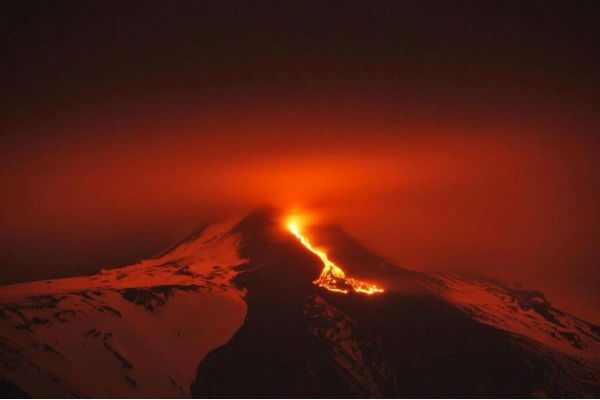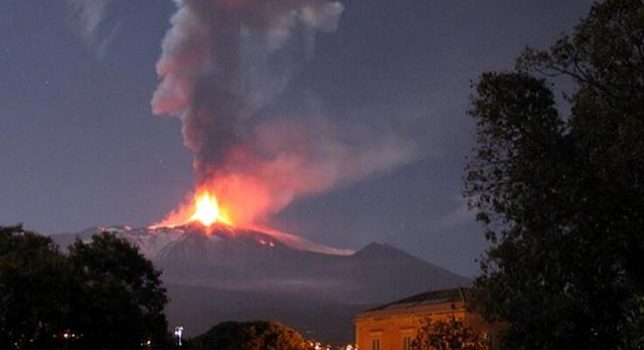The Mount Etna, located on the Italian island of Sicily, continues erupting. It is spewing lava through a fissure on the southern slope of the crater called Bocca Nuova, which stands out against the snow around the formation.
Vulcanologists are trying to reassure the Sicilians by stating that the current eruption is of the subterminal type. What does this mean and what should be taken into account?
Mount Etna, erupting: what you need to know
The National Institute of Geophysics and Volcanology of Catania located the lava emission at an estimated altitude of nearly 3000 meters above sea level, between the base of the Bocca Nuova crater and the southeast crater.

According to the observatory of the National Institute of Geophysics and Volcanology of Italy, no particular changes in the volcano’s parameters were recorded.
In this sense, they sought to reassure the Sicilians. As reported, the current eruption is of the subterminal type, meaning that it comes from a fracture and not from one of the main craters.
What is Mount Etna like
It is the tallest volcano in Europe and is believed to have the longest documented history of eruptions among all volcanoes, with records dating back to 425 BC.
According to data from the European Space Agency (ESA), it has a volume of at least 350 cubic kilometers and is one of the most active (i.e. productive in eruptions) volcanoes on Earth.
Mount Etna has an altitude of approximately 3330 meters, which varies by a few tens of meters depending on its activity, and is surrounded by populated areas. The city of Catania is located to the south.
The lower part of the continental volcano has a base of approximately 60 by 40 kilometers and a height of about 2900 meters.
Ancient activity of Mount Etna
Volcanism began 300,000 years ago towards the southwest of the current summit, before the activity moved towards the current center about 170,000 years ago.
At that time, they began building the main volcanic structure, forming a stratovolcano in alternating effusive and explosive eruptions.

The eruptions of Etna are not all the same. Some occur at the summit, where there are currently four different craters: the Northeast Crater, the Voragine, the Bocca Nuova, and the Southeast Crater.
One particularly violent and explosive Plinian-type eruption occurred at its summit in 122 BC and caused a heavy tephra rain in the southeast, even over the city of Catania.
Do you already know our YouTube channel? Subscribe!

